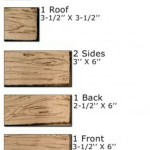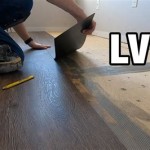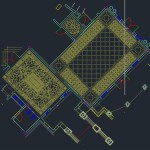Length of Hardwood Flooring Planks in a House
Hardwood flooring remains a desirable option for homeowners, prized for its durability, natural beauty, and timeless appeal. Among the various factors influencing the aesthetic and functional characteristics of hardwood flooring, plank length plays a pivotal role. Understanding the considerations surrounding plank length, including its impact on visual appearance, installation efficiency, and structural stability, is crucial for making informed decisions during the flooring selection process.
The length of hardwood flooring planks can vary significantly, ranging from short strips as small as 12 inches to long planks exceeding 10 feet. This variation stems from several influences, including manufacturing processes, wood species, grading standards, and aesthetic considerations. Examining these factors provides a comprehensive understanding of the available options and their respective advantages and disadvantages.
Visual Impact of Plank Length
The length of hardwood flooring planks directly influences the visual perception of a room. Longer planks generally create a more spacious and luxurious feel. The extended, unbroken lines emphasize the dimensions of the room, making it appear larger and less cluttered. This effect is particularly pronounced in smaller spaces where shorter planks can create a more fragmented and visually busy look.
Conversely, shorter planks can contribute to a more rustic or traditional aesthetic. The numerous end joints create visual interest and a sense of character, which may be desirable in certain design schemes. A shorter plank length can also be more forgiving of uneven subfloors, as minor variations are less noticeable across shorter spans.
Furthermore, the consistency in plank length impacts the overall visual harmony. Flooring installations with precisely uniform plank lengths often present a more formal and polished appearance. In contrast, using planks with varying lengths introduces a more organic and natural aesthetic. This is often achieved through random-length installations, where planks of different lengths are strategically placed to create a visually appealing and balanced pattern.
Color variations within the wood itself are accentuated or minimized based on plank length. Longer planks allow the natural grains and color variations within a single piece of wood to be fully showcased, highlighting the unique character of the material. Shorter planks, conversely, tend to distribute color variations more evenly across the floor, creating a more uniform overall appearance.
Ultimately, the choice of plank length should align with the desired aesthetic and the architectural style of the home. Consideration should be given to the size of the room, the amount of natural light, and the existing decorative elements to achieve a cohesive and visually pleasing result.
Installation Considerations Related to Plank Length
The length of hardwood flooring planks significantly influences the ease and efficiency of the installation process. Longer planks generally require fewer seams, which translates to faster and potentially less expensive installation. Fewer seams also reduce the likelihood of moisture penetration and warping, contributing to the long-term durability of the floor.
However, longer planks can also be more challenging to handle, particularly in smaller or irregularly shaped rooms. Their size and weight require more careful maneuvering and may necessitate the use of specialized tools. Precise cutting and fitting are essential to avoid gaps and ensure a seamless installation.
Shorter planks, on the other hand, are easier to handle and install, particularly in confined spaces. They are also more accommodating of uneven subfloors, as minor variations can be more easily addressed with shorter pieces. However, the increased number of seams associated with shorter planks can make the installation process more time-consuming and labor-intensive.
Waste management is another important consideration. When installing random-length planks, careful planning is necessary to minimize waste. Efficient cutting strategies and strategic placement of planks can significantly reduce the amount of material that ends up being discarded. Longer planks can sometimes result in more waste if they need to be cut to fit in specific areas.
For DIY enthusiasts, shorter planks may be a more manageable option due to their ease of handling and installation. However, professionals often prefer longer planks for their speed and efficiency, especially in larger areas. The choice of plank length should therefore be carefully considered based on the installer's skill level and the specific characteristics of the installation site.
Structural Stability and Plank Length
The length of hardwood flooring planks can also influence the structural stability of the floor. Longer planks tend to be more susceptible to warping and cupping, particularly in environments with fluctuating humidity levels. The greater surface area of longer planks makes them more vulnerable to moisture absorption and expansion, which can lead to distortion over time.
Shorter planks are generally more resistant to warping and cupping due to their smaller size and reduced surface area. The shorter spans allow for greater flexibility and minimize the impact of moisture-induced expansion and contraction. This makes shorter planks a more suitable option for areas with high humidity or significant temperature fluctuations.
The wood species also plays a crucial role in determining structural stability. Some wood species, such as oak and maple, are inherently more stable than others, such as cherry and walnut. Using a stable wood species in conjunction with appropriate plank length can help mitigate the risk of warping and cupping.
Proper acclimation of the hardwood flooring to the environment is essential for ensuring structural stability. Before installation, the planks should be allowed to sit in the room for several days to allow them to adjust to the temperature and humidity levels. This process helps to minimize the likelihood of expansion and contraction after installation.
Subfloor preparation is another critical factor. A level and stable subfloor provides a solid foundation for the hardwood flooring, minimizing the risk of uneven settling and warping. Any imperfections in the subfloor should be addressed before installation to ensure a smooth and durable surface. Correct installation techniques, including proper spacing and fastening, are also critical for maintaining the structural integrity of the floor. Proper moisture barriers should also be considered to prevent moisture from beneath causing issues.
Engineered hardwood flooring, which consists of a thin layer of hardwood bonded to a core of plywood or fiberboard, offers greater dimensional stability than solid hardwood flooring. This makes engineered hardwood a viable option for areas with high humidity or significant temperature fluctuations, even when using longer planks. The multi-layered construction of engineered hardwood helps to resist warping and cupping, providing a more stable and durable flooring solution.
The orientation of the planks can also affect structural stability. Installing planks parallel to the longest dimension of the room can help to minimize the visual impact of any potential warping or cupping. It can also help distribute weight more evenly across the floor, reducing the risk of uneven settling.
Regular maintenance, including sweeping and vacuuming, is essential for preventing dirt and debris from accumulating on the floor, which can contribute to moisture retention and warping. Applying a protective finish can also help to seal the wood and prevent moisture absorption. With proper care and maintenance, hardwood flooring can maintain its structural integrity and aesthetic appeal for many years.
Choosing the appropriate plank length for hardwood flooring involves considering a combination of aesthetic preferences, installation logistics, and structural requirements. By carefully weighing these factors, homeowners can select the plank length that best suits their needs and create a beautiful and durable flooring solution that enhances the value and appeal of their home.

Choosing The Right Wood Floor Width Expert Guide Carlisle Wide Plank Floors

What Size Does Wood Flooring Come In And Beyond Blog

Engineered Wood Flooring Size Guide Bvg

What Size Does Wood Flooring Come In And Beyond Blog

4 Hardwood Plank Sizes And How To Choose The Right One Angi

Determining The Direction To Lay Install Hardwood Laminate Or Luxury Vinyl Plank Flooring

Long Or Random Length Flooring Jfj Wood

3 4 X 8 7 12 Random Length Rift Quarter Sawn Select Better Solid Red Oak

How Does The Length Of Flooring Boards Affect Look Your Home Esb

Maximize Your Space With Carlisle S Large Plank Wood Flooring
Related Posts








